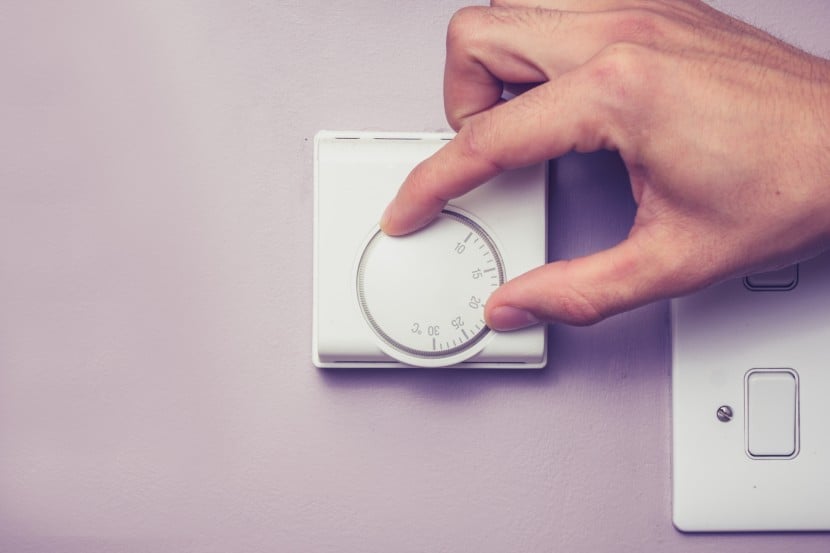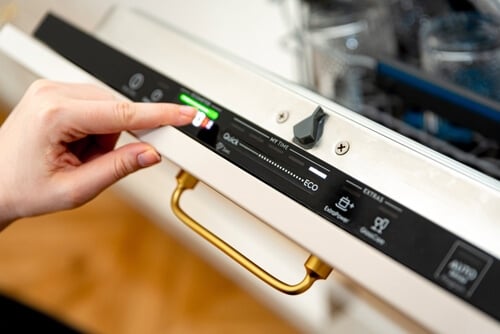The UK energy market is a complex place. There are more types of tariff available than ever as we try to avoid expensive bills. If you’re looking to switch energy, it’s vital to choose the right type of tariff for your needs and circumstances.

What types of energy tariff are there?
There are 2 main categories of energy tariff – fixed rate and variable rate (often abbreviated to SVT). All other tariffs, listed below, are a variation on these 2 main types.
Energy tariff types
- Fixed rate tariffs
- Standard variable rate tariffs
- Tracker tariffs
- Dual fuel tariffs
- Green tariffs
- Prepayment energy tariffs
- Internet-only or online tariffs
- Time-of-use tariffs
- No standing charge tariffs
- Business energy tariffs
Switching energy providers
If you're looking for certainty on your energy bills, compare energy deals to see fixed deals that are currently available.
Fixed rate tariffs
Fixed rate tariffs mean that the price you pay for each unit of energy is fixed for a certain period of time. This is usually somewhere between 12 and 24 months.
The term ‘fixed’ refers to the price per kilowatt of gas and electricity used. It's not your bill amount. You still pay for every unit of energy, so the more you use the more you pay.
On a fixed tariff, even if a supplier raises its prices, the price you pay won’t change during the contraction. On the flip side, those fixed rates mean you don’t feel the benefit if your supplier cuts its energy prices. Before the energy market crash, a fixed deal was an easy way to guarantee you were getting a fairly priced deal.
The energy market is still unpredictable and prices change every 3 months. So a fix that looks good when you sign up might not save you money a few months down the line. The exit fees that some suppliers charge can be high too. So, if you want to leave the deal, you could end up out of pocket.
If you want price certainty, a fixed energy tariff is still a great option. But it’s worth paying attention to the market to see what is predicted to happen after you take it out, as things can change quickly.
Standard variable rate tariffs
You should be on a standard variable rate tariff if you:
- Have never changed your energy supplier
- Have previously switched to a fixed rate tariff that has now ended
- Your energy supplier has gone bust and you’re now with a new supplier
Standard variable tariffs are usually the most expensive tariffs offered by energy companies and are the main focus of the energy price cap imposed by Ofgem.
Most people are on a standard variable tariff because there haven’t been many other options in the past couple of years. There are some fairly-priced fixed deals returning to the market as wholesale prices drop, which could be decent options for those looking for price certainty.
If you want to see if there are any fixed energy deals available for you, compare energy providers now.
Tracker tariffs
Tracker tariffs are variable rate tariffs designed to follow wholesale prices and set unit rates accordingly. However, they’re not subject to the price cap, so you should be able to save if prices drop below the price cap.
These deals could get expensive if they rise above the price cap (up to a set limit which could be quite expensive). If you signed up for this tariff, you'd need to watch wholesale energy prices and work out how they could affect your energy prices.
You may also come across tracker tariffs which provide an in-built discount against the price cap. These are often taken out of standing charges, so while unit rates would change like a normal tracker, standing charges would always be cheaper than they would be on a normal standard variable tariff. This can be a great option for low-consumption households to take advantage of.
Dual fuel tariffs
Dual fuel tariffs provide both gas and electricity from the same supplier. This is helpful when switching, as everything is in 1 place.
Also, energy providers might offer a discount if you get both gas and electricity from them, which could result in some savings. However, it’s important to check if the savings from this discount outweigh the cost of 2 separate energy deals.
Prepayment energy tariffs
A prepayment meter allows you to top up your gas or electricity before you use it via a corresponding prepay token, smartcard or key.
You may find yourself on this type of tariff if you inherited a prepayment meter at a house you’ve recently moved into. Or if your supplier has requested you move to this type of tariff after a debt on your account.
A prepayment tariff has historically been one of the most expensive types of energy deal and your supplier may not allow you to leave this tariff if you're in debt. For this reason, prepayment tariffs are capped by Ofgem.
The price cap limits the unit rate charge, which is calculated and updated 4 times a year.
Online-only tariffs
As the name suggests, online tariffs are managed via the internet. Your meter readings for gas and electricity are recorded online and you pay your bills via an online account. Some companies may even have an app where you can pay your bills on the go.
Should you need help with your account, you can still contact your supplier via the phone.
Online tariffs can be either fixed or variable. Dual fuel options are also available.
Time-of-use tariffs
Time-of-use tariffs alter the price of your gas and electricity depending on the time you use them. These tariffs include Economy 7 and Economy 10 and offer cheaper energy during certain hours when there's lower demand.
You need a special meter for a time-of-use tariff which is capable of charging and measuring 2 rates depending on when you use your energy.
This type of tariff is handy if you know when you use your gas and electricity and if it fits in with the times when it’s cheaper. If you have an electric vehicle, this type of tariff means you can spend less on charging it up overnight.
Economy 7
Economy 7 tariffs offer a low-cost rate for electricity for 7 hours each night. This rate is cheaper than the rate charged during the other 17 hours of the day.
Economy 10
Economy 10 works in the same way but offers 10 hours of low-cost electricity per night.
Green tariffs
Green energy tariffs allow you to do your bit for the environment by buying your energy from companies who produce or purchase it from renewable sources.
Electricity tariffs are easier to make 100% green. The energy produced comes from renewable sources such as solar, wind or waves.
Green gas is more difficult due to there being little renewable gas produced in the UK.
Some renewable tariffs pay a proportion of your bill into funds that support either renewable energy projects such as:
- Solar power
- Hydro-electric generation
- Wind farms
Some might also support reforestation projects.
No standing charge tariffs
Typically, a utility bill contains a standing charge for supplying your home with energy and a per unit charge for the energy you use.
With a no standing charge tariff, you pay for the energy you use but don't pay standing charges.
This could be beneficial if your energy usage varies a lot, particularly if there are periods each month where you don’t use any energy at all.
Before you go for a no standing charge tariff, consider how you use your energy. You should also check the kWh rates charged on this tariff as these are often higher per unit of energy used.
Business energy tariffs
If you’re a business owner, you need to get an energy tariff that’s been designed for commercial properties.
Even if you work from home, if at least 50% of the energy you use is for business purposes, you might benefit from a business energy deal. These differ from domestic deals, the main difference being there's no dual fuel option, so you need separate contracts for gas and electricity.
How do I pick the best energy tariff for me?
The best energy tariff is different for everyone depending on their needs and circumstances. For instance, a time-of-use tariff might work around your lifestyle if you work nights. If you’re conscious about the environment, a green tariff might be the option for you. If you want price certainty, a fixed tariff could be the best option. Think about your priorities and pick a tariff that best matches those priorities.
How to switch energy supplier
You can switch energy supplier through Confused.com in minutes. All you need is:
- Your postcode
- Your energy plan name
- A recent bill
That's it - your new and old suppliers take care of the process once you confirm your switch, which should be completed within 5 days.







